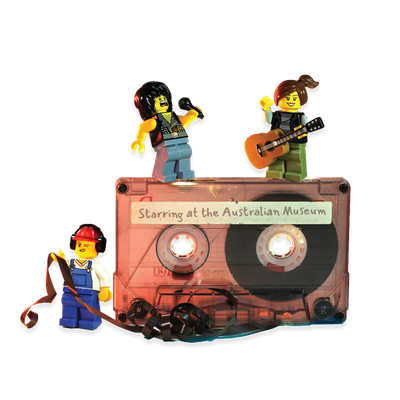Your search returned 21 results
By Page Type
By Tag
- All
- fish (966)
- blog (698)
- fishes of sydney harbour (400)
- First Nations (293)
- Blog (236)
- AMRI (169)
- archives (165)
- Aboriginal and Torres Strait Islander (135)
- Eureka Prizes (131)
- insect (126)
- Ichthyology (125)
- geoscience (109)
- minerals (102)
- climate change (98)
- podcast (94)
- Fish (91)
- Anthropology (89)
- International collections (80)
- Minerals Gallery (78)
- wildlife of sydney (78)
- Labridae (77)
- frog (73)
- gemstone (70)
- history (63)
- photography (63)
- staff (61)
- Mollusca (60)
- gem (59)
- Birds (58)
- education (57)
- Gems (56)
- Indonesia (56)
- AMplify (54)
- shark (54)
- people (53)
- exhibition (51)
- earth sciences (50)
- past exhibitions (50)
- Gobiidae (48)
- Pomacentridae (45)
- sustainability (45)
- Serranidae (44)
- science (43)
- lifelong learning (42)
- Earth and Environmental Science (41)
- Syngnathidae (41)
- Ancient Egypt (40)
- Bali (40)
- bird (40)
- dangerous australians (40)
-
How do fossils form?
https://australian.museum/learn/australia-over-time/fossils/how-do-fossils-form/For a plant or animal to become a fossil, a series of events must occur...
-
What are fossils?
https://australian.museum/learn/australia-over-time/fossils/The word ‘palaeontology’ refers to the study of ancient life. It is derived from the Greek words palaios (ancient) and logos (study). Fossils form the basis of this science.
-
Earth science
https://australian.museum/learn/minerals/The Mineralogy and Palaeontology collections include rocks, minerals, gemstones and fossils, and reveal how the earth was formed.
-
Date a Fossil
https://australian.museum/get-involved/citizen-science/date-a-fossil/Become a palaeontologist from home and help us to reveal new information about ancient ecosystems
-
What are conodonts?
https://australian.museum/learn/australia-over-time/fossils/what-are-conodonts/What conodonts were remained a mystery for many years. These microfossils were variously thought to belong to annelid worms, arthropods, molluscs, chaetognaths (marine worms), fish (as teeth), and even plants. The discovery of an articulated 'conodont animal' was a significant breakthrough.
-
Preparing fossils, reconstructing the past
https://australian.museum/learn/australia-over-time/fossils/preparing-fossils-reconstructing-the-past/The very early stages of piecing together the animals and plants of the past involve removing their fossils from the rock and preserving them for study.
-
Fossil sites near Sydney
https://australian.museum/learn/australia-over-time/fossils/sites/fossil-sites-near-sydney/Fossils have been found at many sites near Sydney. Some of these are no longer accessible but coastal exposures still give the amateur collector ample chance of finding good fossils.
-
Palaeontology
https://australian.museum/learn/collections/natural-science/palaeontology/Palaeontology is the study of fossils. Fossils are the remains or traces of prehistoric living things and are preserved in substances such as sediments, coal, tar, oil, amber or volcanic ash, or frozen in ice or naturally mummified.
-
Fossil sites of Australia
https://australian.museum/learn/australia-over-time/fossils/sites/Fossils are a part of our natural heritage and while the vast majority of fossils found by amateur collectors are worth very little in monetary terms, they may be important scientifically.
-
How are fossils found and excavated?
https://australian.museum/learn/australia-over-time/fossils/how-are-fossils-found/Finding fossils is a combination of hard work, chance and knowing where to look! Fossils are mostly found where sedimentary rocks of the right age are exposed, such as river valleys, cliffs and hillsides, and human-made exposures such as quarries and road cuttings.
-
Find out more
Tails from the Coasts
Special exhibition
On now![]()
-
Find out more
Burra
Permanent kids learning space
10am - 4.30pm![]()
-
Discover more
RELICS
Special Exhibition
Opens 16 August 2025![]()
-
Discover more
Minerals
Permanent exhibition
Open daily![]()





